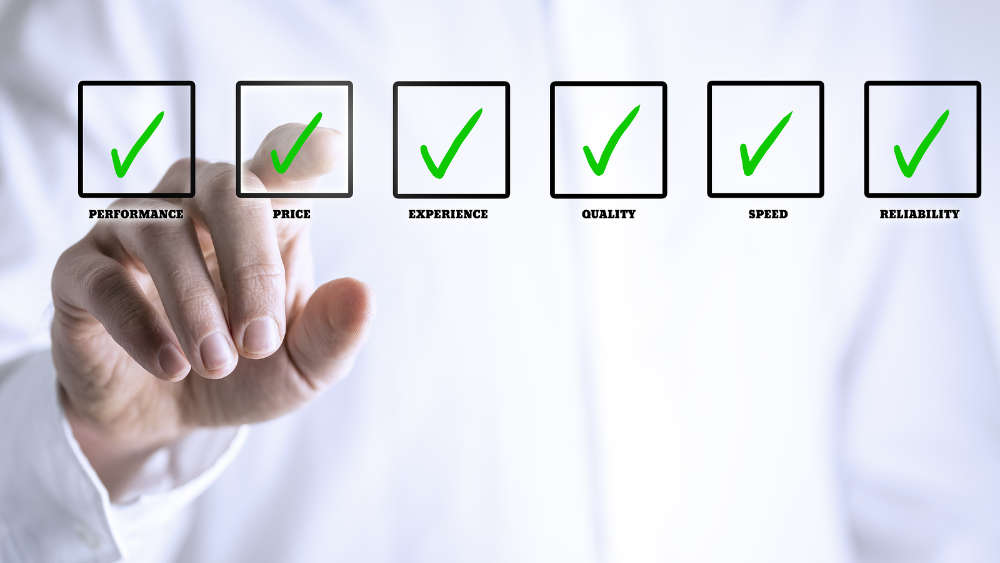
The interconnectedness of the business world and information technology requires that organizations commit to robust governance, risk, and compliance (GRC) programs. However, managing the daily tasks associated with data strategy and infrastructure becomes overwhelming as companies look to scale. As IT risk management and compliance become more complex, organization turn to automated software-as-a-service (SaaS) platforms to manage the administrative tasks.
Why You Need An Automated Approach To IT GRC Management
What is risk management?
Risk mitigation requires assessing strategic, compliance, operational, financial, and reputational risks and putting controls into place that try to keep those from harming your business. The first step to understanding risk management is to review the regulations and standards applying to an organization. This review helps companies best determine the needed controls.
How does setting objectives help with compliance management?
Organizations must create cross-departmental business objectives so that risk reviews align with corporate goals. Establishing organizational aims, therefore, means companies consider not only the current risks facing them but also the threats facing potential new revenue streams. Engaging in the objective setting process allows organizations to define the risks that match their business goals. Once they have outlined these risks, companies determine whether to tolerate, transfer, mitigate, or accept the risk.
What is enterprise risk management?
Enterprise risk management (ERM) incorporates the steps of risk mitigation and compliance management within the organization’s overarching business goals. ERM integrates cross-departmental risk assessments while also mapping internal and external risks within those areas. External risks, for example, incorporate vendor risk management and the cybersecurity profiles of business partners.
When vendors have cybersecurity risk profiles that do not match their hiring organizations’ profile, they may open a company to new risk. A company may regularly update their devices and systems to control for vulnerabilities, but their vendor does not. If this vendor has access to sensitive data, then the vendor’s risk becomes the hiring company’s risk. This potential liability leads to possible reputation and income loss.
What is the role of compliance management in ERM?
Two types of compliance impact a GRC stance. Regulatory compliance means ensuring an organization follows the rules in legislation. For example, Sarbanes-Oxley Act of 2002 (SOX) compliance focuses on organizational financial reporting. However, as part of appropriate financial reporting, SOX incorporates the impact of cybersecurity events on economic bottom lines.
Many organizations also must comply with industry standards. While monetary penalties accompany regulatory noncompliance, noncompliance with industry standards means business loss. For example, ISO 27001 may not incorporate a fine for noncompliance, but customers seeking organizations with a strong cybersecurity stance will find noncompliance to be a deterrent when they do their risk analyses.
Thus, compliance management becomes a driver for business relationships that lead to profit.
Where does audit management fit into GRC?
The corporate governance portion of GRC requires the Board of Directors and executive officers oversee risk management. To appropriately engage in oversight, they must clearly understand the risks as well as the mitigation strategies.
Several regulations, including SOX, incorporate fines if the Directors have not appropriately understood and reviewed risks. While many Directors and executive officers understand business risks such as partner organization credit ratings, many may be less confident of their IT management knowledge.
Audits, therefore, become one way that organizations can continuously prove their controls to determine whether they have appropriately evaluated the risks. By having internal and external audits review controls and metrics, organizations have supporting documentation that evaluates their compliance strategies.
How does automating GRC help with risk mitigation?
Automating the risk management process requires a solution that supports documenting workflow assessment while helping to visualize reporting and remediation.
With ZenGRC, organizations can review their internal risk mitigation strategies by reviewing our easy-to-digest risk heat maps. These provide color-coded risk reviews that incorporate real-time analytics. Our risk dashboard shows the organization’s risk trend, risk responsibility, current risk status, and opportunities for remediating risks.
For example, the Opportunities view highlights in red the critical vulnerabilities impacting the organization’s environment, recommending patches or updates needed. By color-coding the notifications, IT managers can quickly review and reference important changes to make.
Moreover, the Risk Responsibility view shows organizations highlighted risks across twelve sources. These sources are access control, audit management, business continuity, communication security, compliance, cryptography, HR security, information security policies, incident management, operations security, information security organization, and project & enterprise risk. Areas with the most substantial risk component are highlighted in red to target the most critical risk mitigation areas.
How does automation help with audit management?
Successful GRC automation requires audit management functions that help manage work paper, schedule tasks, manage time and reporting. As part of this, automated GRC platforms should incorporate document management enabling organizations to follow the life cycle of the policy from creation to review while also enabling changing and archiving.
ZenGRC’s System-of-Record makes collecting audit information easy. By streamlining the workflow, organizations can eliminate emails while tracing outstanding tasks. Additionally, the unified control management feature allows organizations to map controls across multiple frameworks, standards, and regulations to determine whether compliance gaps exist. This mapping capability enables organizations to ensure consistency that leads to stronger audit outcomes.
For example, as part of the System-of-Record dashboard, organizations have at-a-glance insight into the percentage of controls finalized and a portion of controls mapped to a particular framework.
ZenGRC’s streamlined workflow shows task managers the date on which a vendor provided a response and a status. These details mean that compliance managers no longer need to spend time following up with the organization’s multitudinous vendors.
GRC automation enables organizations to focus on the fundamental issues of compliance while eliminating the tedious tasks that often make compliance feel like a burden. Not only does this help compliance officers feel more effective at their jobs, it also makes organizations more efficient at the ongoing task of governance and continuous monitoring.
For more information about how ZenGRC can streamline your GRC process, contact us for a demo today.
